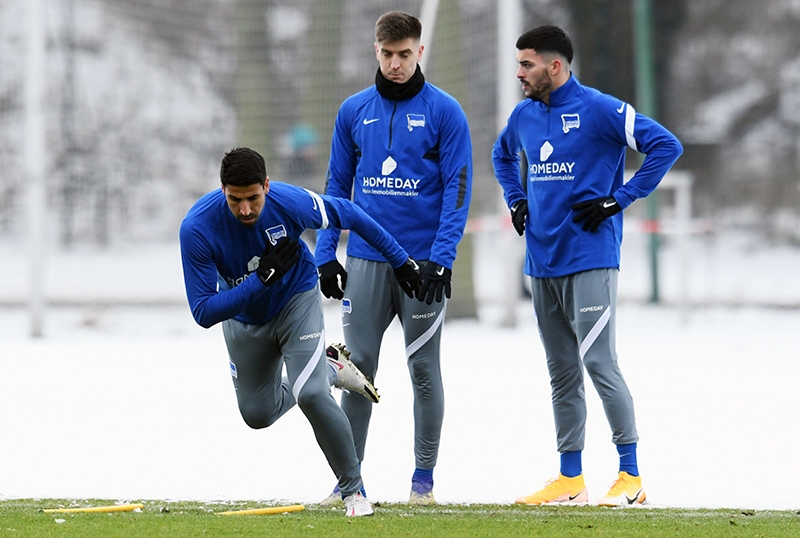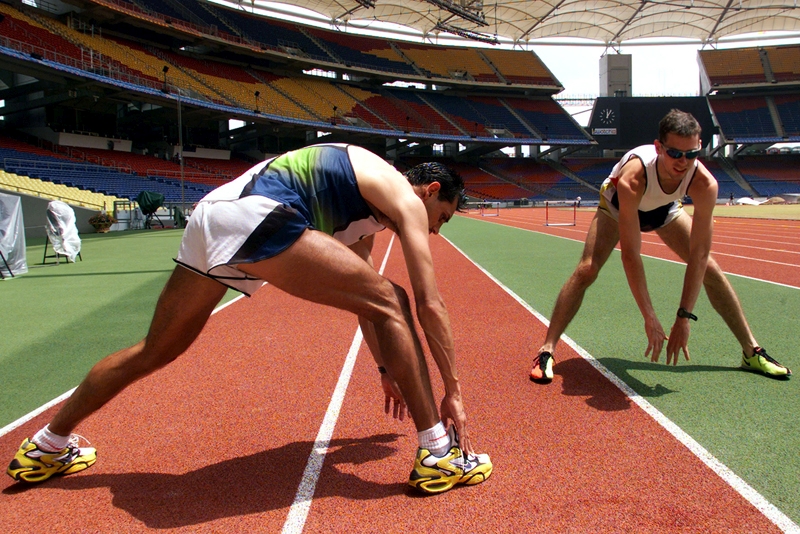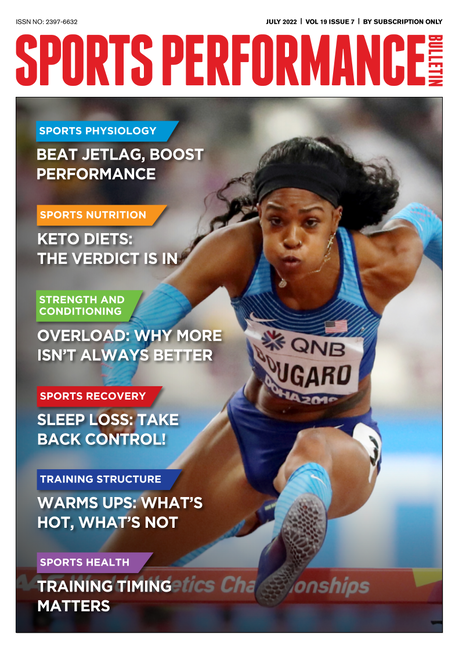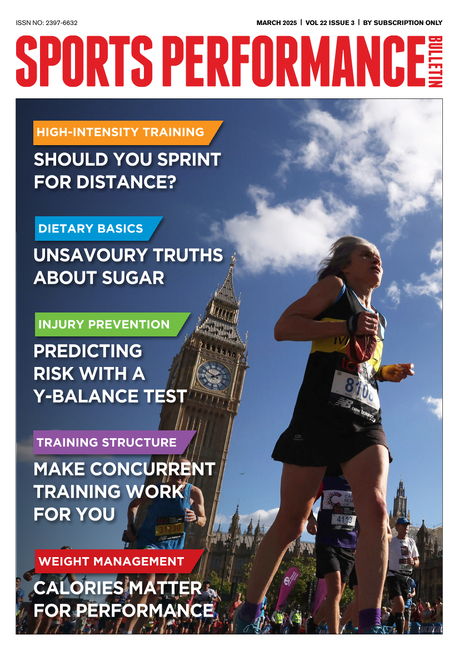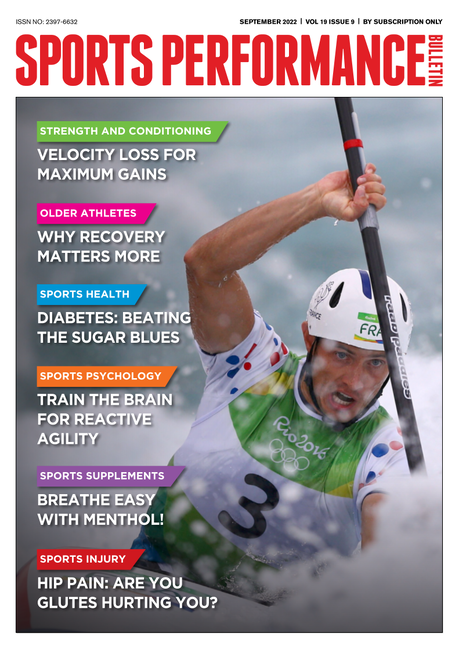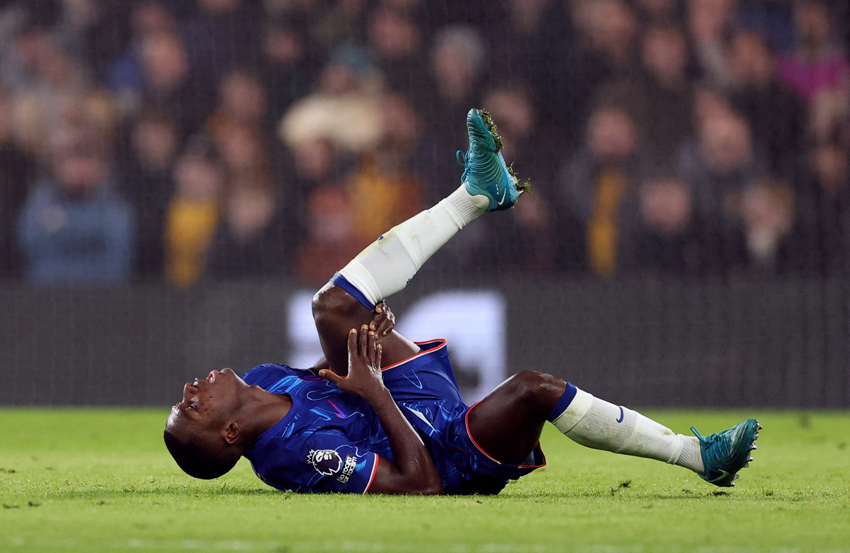You are viewing 1 of your 1 free articles. For unlimited access take a risk-free trial
Warming up: what’s hot and what’s not?

How can athletes tailor their warm ups for the greatest performance benefits? SPB looks at the evidence
When you’re training hard or competing, you can be burning anything to 20 times more energy than you use at rest, and without some kind of preparation for this intense work, your body will be put under quite a bit of physiological stress. For starters, muscles that are cold are also more inelastic, increasing the amount of internal friction (and effort) required for muscle movement. Cold muscles also lack an optimum flow of oxygenated blood, which leads to higher concentrations of muscle-fatiguing lactate if you work them hard without first warming them up. Not only that, but the joints involved in producing movement are stiffer and require more effort to move through their natural range of movement when they’re cold making the ligaments supporting these cold joints more prone to damage or tears. So, if you simply tie up your running shoe laces/clip your shoes into the pedals/dive into the water/kick off a match and tear off at full speed without any warm up, it’ll not only blunt your performance, you’ll also be increasing your injury risk into the bargain.Moving the warm-up goalposts
Until the early 2000s, most sport science and PE textbooks were agreed on what constituted the perfect pre-exercise warm up:- A gentle to moderate aerobic pulse raiser to send oxygenated blood (and extra heat) to the working muscles.
- Mobilisation work to loosen the joints.
- Some pre-exercise stretches to prepare the muscles for the larger range and velocities of movements they would encounter during exercise.
Box 1: Pre-exercise stretching: the good, the bad and the ugly
In an earlier SPB article, Dr Gary O’Donovan reviewed the research findings on pre-exercise stretching(3). In 61 studies investigating the acute effects of pre-exercise static stretching on strength and power, only one study found an improvement in performance whereas 38 found reductions in performance with 22 finding no difference either way. Hardly surprising then that Dr Gary concluded that ‘pre-exercise static stretching is a waste of time or, worse, is detrimental to performance’! Dynamic stretching in a warm up fared a little better; out of ten studies, six found improvements in performance suggesting that dynamic stretching (tailored to target the key muscles used in the exercise to follow) in a warm-up might be beneficial. What is less clear however is how much of this benefit comes from the heat created - ie the warming up and increased blood flow - and how much is due to the actual stretching component.The warm up proper
Unlike pre-exercise warm up stretching, there’s absolutely no doubt that the warm up pulse raiser produces significant performance benefits – indeed it’s what a warm up is really all about. What’s less well understood is the optimum intensity and duration of any exercise during the warm up – ie how hard and how long to warm up for the best subsequent performance.The conventional approach recommends performing 5-15 minutes of gentle aerobic exercise performed at around 55-60% of maximum heart rate (MHR - approximately [220 – age in years]) with perhaps longer-duration pulse raisers before particularly intense sessions. The logic is that a warm-up is considered to be just that; a short and fairly gentle routine to warm up the muscles, prepare them for the strenuous work to come without the risk of fatigue while at the same time reducing the risk of injury.
How hard?
Although the approach outlined above makes sense, there’s evidence that a more intense period of pulse raising could be even more beneficial. We already know that high-intensity exercise performed prior to a second bout of exercise increases the energy contribution coming from oxidation of fuels in that second bout of exercise(4). This is because the prior bout of exercise enhances ‘oxygen kinetics’ – the ability of the blood (which carries oxygen) to flow around working muscles. The obvious question therefore is whether a high-intensity pulse raiser in a warm up is better for subsequent performance than a standard pulse raiser. One study compared two types of warm up in eleven highly-trained middle-distance runners to see how they affected subsequent competitive performance during an 800-metre race(5):- Standard warm up – consisting of a 10-minute self-paced jog and standardised mobility drills, followed by six sets of 50-metre strides;
- High-intensity warm up – consisting of a 10-minute self-paced jog and standardised mobility drills, two sets of 50-metre strides and then a continuous high-intensity 200-metre run performed at race pace.
Figure 1: Oxygen consumption amounts for high (green bar) vs. standard intensity (blue bar) warm up

Higher oxygen consumption during 800m race following high-intensity warm up occurred as a result of better pre-race blood flow to muscles.
Figure 2: 800m race times for high (green bar) vs. standard intensity (blue bar) warm up

Faster 800m times following high-intensity warm up probably occurred as a result of reduced lactate accumulation due higher oxygen availability.
There’s also evidence that high-intensity warming up can benefit field sports such as football(6). An Australian study compared a standard team warm up (jogging, stretching, mobilisation etc.) with two alternative much higher-intensity, short-duration warm ups consisting of either five reps of leg presses at maximum effort or small-sided games (which entail a lot of running and produce a high workload). Subsequent performance tests included counter-movement jump, reactive agility, and 15×20 m sprints embedded in an intermittent exercise task. The results showed that the small-sided games and leg presses produced significant gains in countermovement jump height and in reactive agility compared to a conventional warm up. The leg press warm up also improved 20m-sprint times.
Too much of a good thing?
Although some high-intensity work in a warm up seems beneficial, too much may be counterproductive. For example, a Canadian study on cyclists compared two warm up protocols on subsequent performance(7):- Twenty minutes of cycling with a gradual intensity increase from 60% to 95% of maximal heart rate then four sprints were performed at 8-minute intervals;
- Fifteen minutes of cycling with a gradual increase from 60% to 70% of maximal heart rate then just one sprint.
Another study on cyclists looked at the effects of moderate, heavy and severe warm-up protocols on all-out 30-second sprint performance, muscle oxygenation and metabolism in eight trained male cyclists(8). The severe protocol produced the best pre-sprinting blood and oxygen flow to the muscles; unfortunately however, it resulted in slower times and reduced power outputs in the 30-second sprint. The researchers concluded that while the severe warm up benefitted oxygenation and aerobic performance, it reduced the capacity of the cyclists’ anaerobic systems, which was then detrimental to their sprint performance.
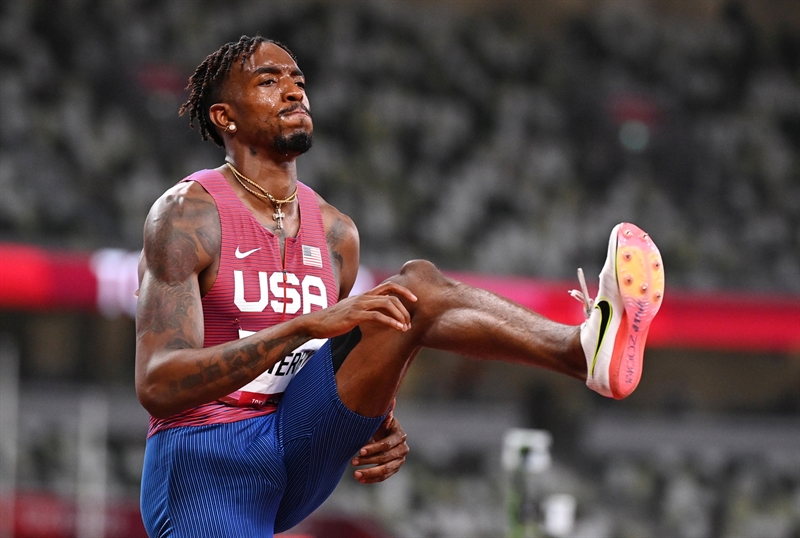
Warm up duration
Something else that needs to be considered is warm up duration. Too long a warm up, even when intensity is not extremely high, could be detrimental by creating excessive muscular fatigue. A good illustration of this can be seen in a study on rowers(9). The traditional warm-up procedure in rowing usually involves continuous, low-intensity rowing lasting up to 60 minutes (yes, a long time!) interspersed with shorter, intense bursts. In this study, 14 trained rowers performed an all-out 10-minute rowing time trial using two types of warm up:- One hour of the ‘traditional’ rowing warm-up.
- As above but with the duration reduced by 50% - ie lasting only 30 minutes.
Weighted vests during warm-ups
Earlier in this article, we mentioned the benefits of dynamic stretching in a warm up. Just to recap, while there is good evidence that dynamic warm ups are can be beneficial(10,11), some scientists believe that these benefits might occur more as a result of the actual warming up that they produce. This has led some researchers to investigate whether a more strenuous dynamic warm-up through the use of weighted vests might yield additional benefits. In one study, US researchers carried out a study to investigate three different warm-up protocols on subsequent vertical and long jump performance(12).Sixteen female athletes participated in the study, which looked at the effects on jumping performance of one the following three warm-up protocols:
- Low to moderate-intensity stationary cycling, followed by 4 lower-body static stretches (each performed 3 times and held for twenty seconds).
- Twelve moderate to high-intensity dynamic exercises.
- The same twelve dynamic exercises as above but this time with a weighted vest (adding 10% bodyweight) worn for the last four of the twelve exercises.
Figure 3: Effect of warm up on jumping distance

Note how the use of weighted vest in a dynamic warm up increased performance compared to no vest.
Don’t waste your warm up!
So far we’ve looked at optimum warm up protocols. However, in many pre-competition situations, it’s nigh on impossible to carry out a warm up and then go immediately to the race start. This means that some of the benefits of the warm-up are potentially lost as the muscles cool down in the period between the warm up and the race start. But research by scientists at the University of Loughborough found that there could be an effective strategy for athletes seeking to maximise the effectiveness of their pre-race warm up in real-world race conditions(13).The researchers investigated the effect of passive insulation versus external heating on thigh muscle temperature and subsequent maximal sprint performance during the period between a sprint-specific warm up. To do this, 11 male cyclists completed a standardised 15-minute intermittent warm up on a cycle ergometer, followed by a 30-min passive recovery period before completing a 30-second maximal sprint test. This protocol was completed three times under identical conditions except for the period between the end of the warm up and the sprint test when the cyclists wore a tracksuit top and either:
- Standard tracksuit pants
- Insulated athletic bottoms (to try and minimise heat losses from the leg muscles)
- Insulated athletic bottoms with integrated electric heating elements to actively heat the leg muscles
The first finding was that the warm up on the ergometer increased the cyclists’ muscle temperature by around 2.5 degrees C. The muscle temperature remained elevated when the cyclists wore the bottoms with integrated heating elements but declined when the cyclists were wearing the ordinary or insulated-only bottoms. More importantly, the researchers also found that when the heated bottoms were worn, the cyclists’ peak power outputs during the sprint test were approximately 9.6% higher and they also managed to produce significantly higher levels of blood lactate (indicating that they had indeed been able to work more intensely).
It seems then that to get the maximum benefits from a warm up, as much of the heat generated in the muscles as possible needs to be retained before the race start. In reality, this means leaving your warm up as late as possible (ie warm up as near as possible to the race start) and then trying to retain that heat, if necessary by using a heat source to maintain the elevated muscle temperature – eg by using heat packs, hot water bottles etc, held against the muscles!
Practical advice for athletes
As far as pre-exercise warm-up stretching goes, dynamic stretching may offer some useful benefit but that’s the only type of warm up stretching that athletes should consider. Providing added resistance to the dynamic exercises may offer additional advantages. When it comes to the warm up proper, there are a number of things to consider. It needs to be long enough to properly raise core temperature but not overly long as this may simply create unnecessary fatigue. It should also contain some limited high-intensity race-pace work to maximise blood flow to muscles but this should be kept short (less than 2 minutes) again to avoid undue fatigue. High-load muscle-specific resistance work may also be beneficial and games players may also benefit from a short period of small-sided game playing. Finally, any warm up should ideally be performed immediately before the race/game as the longer the delay, the less effective will be that warm up. Here is a bulleted summary of general and specific recommendations:- The faster and shorter your event, the more important a warm up becomes. Warming up for a sprint event, or a race lasting just a few minutes, is extremely important; warming for a ultra-marathon is less so where simply starting off gently for the first 10-15 minutes will suffice.
- Forget static or ballistic stretching in a warm up – there’s little evidence it’s of any value whatsoever; instead, perform 3-4 minutes of sport-specific dynamic stretches.
- In the first part of the warm up proper, start gently and gradually increase your effort until you’re working at around 70% of your maximum heart rate. Be sport specific and expose your muscles to the movements they’re about to perform.
- After 10 minutes or so, perform a high-intensity burst at your full race/match pace for up to two minutes (but no longer). Try to do this within 5 minutes of the start of your event.
- Perform any warm up as close to the start time of your event as possible and try and ensure you retain maximum heat in the muscles after the warm up.
- Find out what warm up facilities are available at your event; be prepared to adapt your warm up routine is necessary (eg cyclists should consider performing a cycling-specific dynamic routine immediately before a race if there are no stationary bikes available).
- Med Sci Sports Exerc. 2018 Jun;50(6):1258-1266
- Hum Mov Sci. 2017 Oct;55:189-195
- Peak Performance; 2010, volume 290, p9-11
- Med Sci Sports Exerc 2003 Dec; 35(12):2085-92
- Int J Sports Physiol Perform. 2013 Jan;8(1):77-83
- J Sci Med Sport. 2011 Nov;14(6):522-8
- J Appl Physiol. 2011 Jul;111(1):228-35
- Eur J Appl Physiol. 2012 Aug;112(8):3129-39
- Int J Sports Physiol Perform. 2012 Jun;7(2):186-8
- Br J Sports Med. 2015 Jul;49(14):935-42
- J Sports Med Phys Fitness. Jan-Feb 2018;58(1-2):135-149
- J Strength Cond Res. 2007 Feb;21(1):52-6
- Med Sci Sports Exerc. 2013 Feb;45(2):359-65
Related Files
Newsletter Sign Up
Testimonials
Dr. Alexandra Fandetti-Robin, Back & Body Chiropractic
Elspeth Cowell MSCh DpodM SRCh HCPC reg
William Hunter, Nuffield Health
Newsletter Sign Up
Coaches Testimonials
Dr. Alexandra Fandetti-Robin, Back & Body Chiropractic
Elspeth Cowell MSCh DpodM SRCh HCPC reg
William Hunter, Nuffield Health
Keep up with latest sports science research and apply it to maximize performance
Today you have the chance to join a group of athletes, and sports coaches/trainers who all have something special in common...
They use the latest research to improve performance for themselves and their clients - both athletes and sports teams - with help from global specialists in the fields of sports science, sports medicine and sports psychology.
They do this by reading Sports Performance Bulletin, an easy-to-digest but serious-minded journal dedicated to high performance sports. SPB offers a wealth of information and insight into the latest research, in an easily-accessible and understood format, along with a wealth of practical recommendations.
*includes 3 coaching manuals
Get Inspired
All the latest techniques and approaches
Sports Performance Bulletin helps dedicated endurance athletes improve their performance. Sense-checking the latest sports science research, and sourcing evidence and case studies to support findings, Sports Performance Bulletin turns proven insights into easily digestible practical advice. Supporting athletes, coaches and professionals who wish to ensure their guidance and programmes are kept right up to date and based on credible science.
